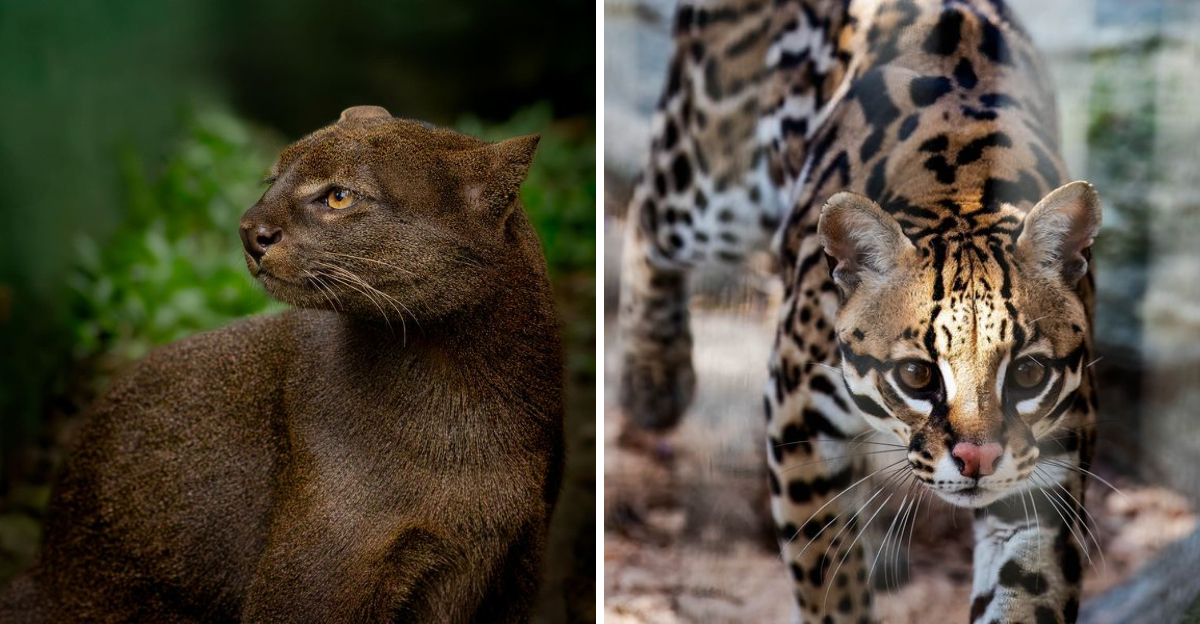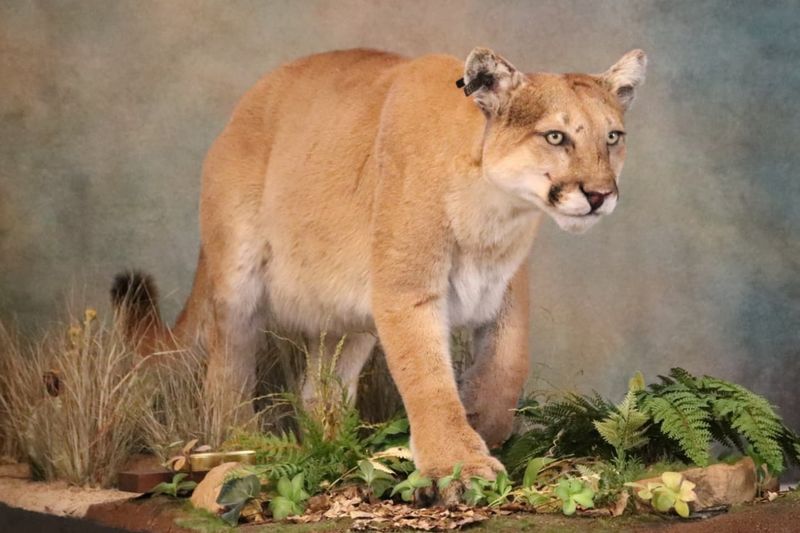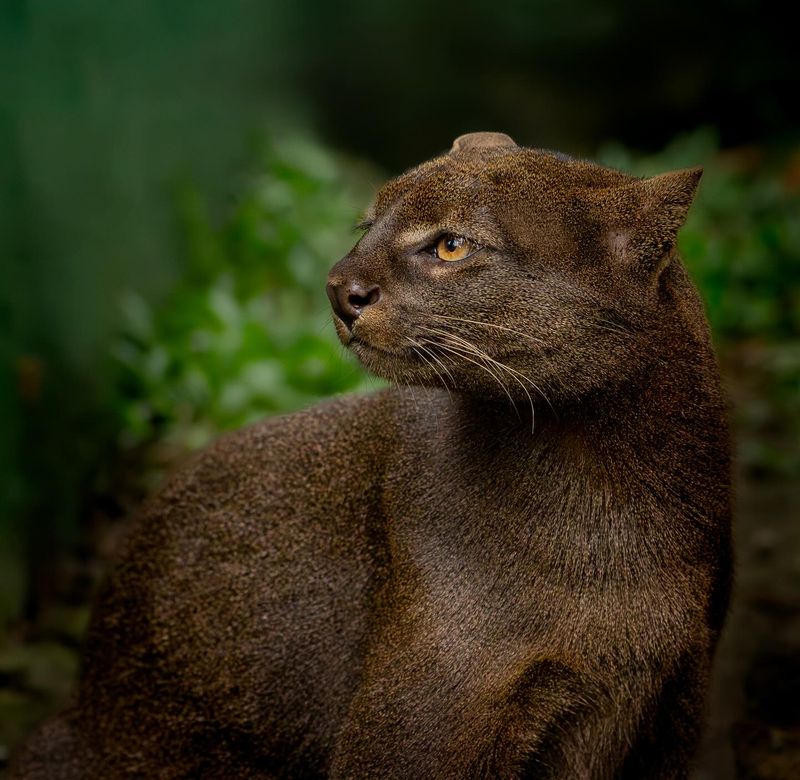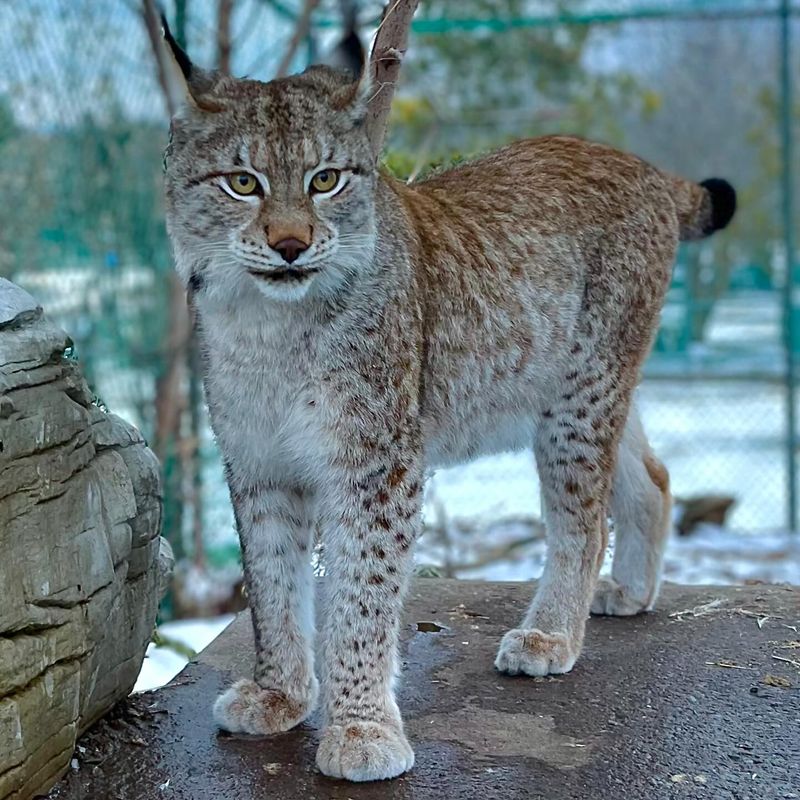📖 Table of Content:
From snow-laced forests in Maine to the sunbaked scrub of Texas, stealthy feline predators are silently patrolling the wild corners of America. You may never see them, but they see you. These wild cats aren’t just surviving in some of the continent’s harshest environments—they’re thriving, shaping the balance of ecosystems as ghostlike rodent controllers and apex hunters.
Whether you’re hiking a remote trail or simply hearing an eerie call in the night, knowing which wildcats prowl your region can turn a quiet walk into a thrilling safari. Some blend in so well they vanish before your eyes. Others, like the jaguarundi, barely seem like cats at all.
Let’s journey across the U.S., region by region, and uncover the untold stories of America’s elusive feline rulers—from the bobcat’s backyard prowl to the ocelot’s tropical shadows.
1. Bobcats Rule the Northeast
Tufted ears and stubby tails make bobcats the distinctive wildcats of the Northeast forests. These medium-sized predators weigh between 15 and 35 pounds—about twice the size of your average house cat—and sport distinctive spotted coats perfect for blending into the dappled forest light.
Look for their tracks in muddy or snowy areas; bobcat prints lack claw marks (unlike coyotes) and show a distinctive C-shaped heel pad. Dawn and dusk offer the best viewing opportunities when these normally secretive hunters become more active.
Bobcats have adapted remarkably well to human development, sometimes hunting on the edges of suburban neighborhoods. Their raspy calls, similar to a house cat but louder, might be heard during winter mating season.
2. Mountain Lions Prowl the West
Known by many names—cougar, puma, panther—the mountain lion reigns as the largest wild cat in the Western United States. Their powerful build and tawny coats help them stalk deer through rugged mountain terrain. These solitary hunters can leap 15 feet vertically and maintain territories spanning up to 100 square miles.
Mountain lions leave distinctive tracks nearly 4 inches wide without claw marks. Unlike smaller cats, they can’t roar but instead vocalize through purrs, chirps, and their infamous high-pitched screams that pierce the night.
Female mountain lions raise cubs alone for about two years before the young disperse to establish their own territories. Sightings are extremely rare as these cats actively avoid human contact.
3. Jaguarundis Sneak Through the Southwest
With their elongated bodies and short legs, jaguarundis resemble weasels more than typical cats. These rare southwestern felines sport uniform coats ranging from rusty brown to charcoal gray, helping them hunt small prey through dense brush along the Texas-Mexico border.
Unlike most cats, jaguarundis are primarily active during daylight hours. Their unusual appearance includes a flattened head, rounded ears, and an extremely long tail that helps with balance while navigating thick vegetation.
Habitat loss threatens these secretive cats, making sightings extremely rare. Wildlife cameras provide most documentation of their presence. Listen for their 12 distinct vocalizations—more than any other North American wild cat—including chirps, purrs, and whistles used for communication.
4. Ocelots Stalk the South Texas Borderlands
Gorgeous spotted coats make ocelots the leopards of North America, though their population has dwindled to fewer than 50 individuals in the United States. These medium-sized cats, weighing up to 35 pounds, hunt primarily in the dense thornscrub forests of the Rio Grande Valley.
Recognizing an ocelot means spotting their distinctive elongated spots arranged in chain-like patterns. Their large eyes reflect brilliantly at night, appearing golden when caught in light. Their long tails, nearly the length of their bodies, help with balance.
Ocelots depend on thick cover for hunting and raising young. Conservation efforts include wildlife corridors connecting fragmented habitats. Most ocelot documentation comes from trail cameras placed along game trails where these nocturnal hunters travel.
5. Lynx Thrive in Alaska and the Upper Midwest
Massive snowshoe-like paws keep Canada lynx afloat atop deep northern snowdrifts. These specialized hunters, slightly larger than bobcats, feature dramatic ear tufts, facial ruffs, and black-tipped tails. Their thick silver-gray winter coats provide perfect camouflage in boreal forests.
Lynx populations closely follow snowshoe hare cycles—their primary prey. When hare numbers drop every 8-11 years, lynx may venture farther south into northern Minnesota, Wisconsin and Michigan. Their distinctive bounding tracks show widely spaced groups of four prints.
Unlike bobcats, lynx rarely adapt to human development, preferring remote wilderness. Their long legs and lightweight bodies evolved specifically for deep snow hunting. The haunting wails during mating season often get mistaken for injured people or other wildlife.





